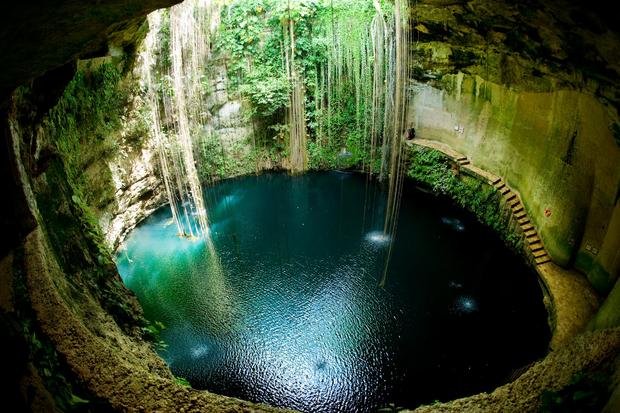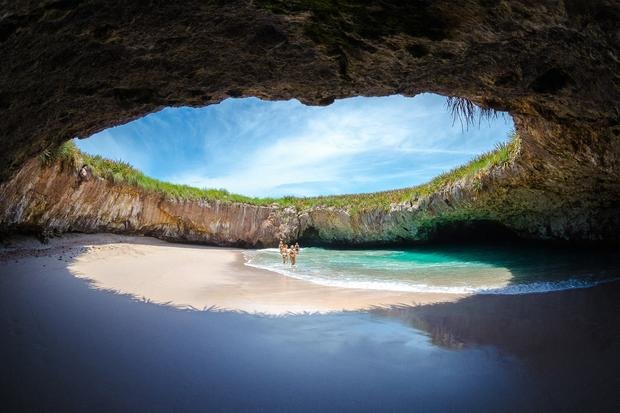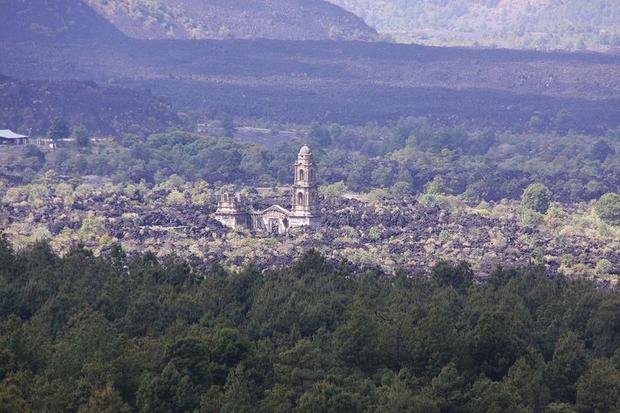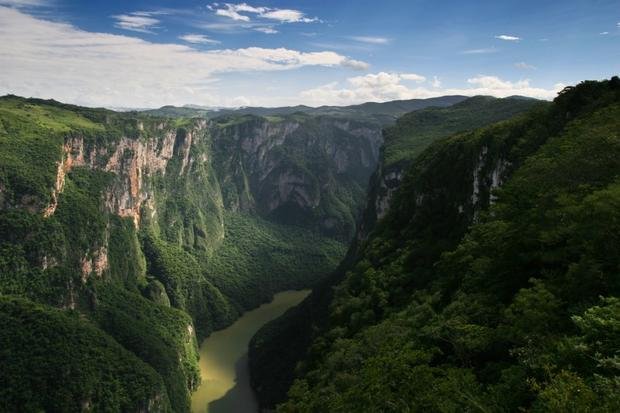1- The Waterfalls in Palenque, Chiapas
The Area of protection of flora and fauna Waterfalls of Agua Azul, also Agua Azul Waterfalls, is an area of protection of flora and fauna of Mexico located in the state of Chiapas.
Its waterfalls are formed thanks to the tributaries of the river Otulún, Shumuljá and Tulijá, forming not very deep canyons with vertical cliffs that give rise to its waterfalls blanquiazules. They are to the north of the State of Chiapas, in the municipality of Tumbalá to 64 km of the city of Palenque. The waters have that beautiful blue color by the salts of carbonates that are dissolved. The vegetation is mountainous jungle type, lush, in some parts covers the river, it is common to see fallen tree trunks petrified.

2-
Cenotes of Yucatán
Cenote is a term that is only used in Mexico and that comes from the Mayan word "dzonot", that means "abyss"; are freshwater wells created by the erosion of limestone, soft and porous, but for the Mayan world, they were sources of life that provided the vital liquid, as well as being an entrance to the wonders of the other world and the center of communion with the gods.

3- Islas Marietas, una playa tierra adentro escondida en una isla en Nayarit
Las islas Marietas o islas Tres Marietas son un grupo de pequeñas islas deshabitadas en el estado de Nayarit a unas pocas millas de Punta de Mita y Nuevo Vallarta, Nayarit. Son destinos turísticos muy populares porque abunda la vida marina debido a que las islas están protegidas de la pesca y caza por el gobierno mexicano.
El punto más conocido y visitado de las islas es Playa Escondida, también conocida como Playa Oculta o Hidden Beach.

4-
The church buried by the Paricutín, the youngest volcano in the world in Michoacán
The unexpected eruption of the Mexican volcano Paricutin, in 1943, completely disappeared to two small towns. Only the Church of San Juan Parangaricutiro was able to withstand only the volcano's attack, being half-buried beneath the lava, as a mute witness to what had happened. Since then, its ruins have become a tourist attraction because it is very close to the youngest volcano in the world

5- The Canyon of the Sumidero, is a narrow deep canyon located 5 km from Tuxtla Gutierrez, capital of the state of Chiapas. This canyon has a cliff whose height goes a little beyond 1000 m above the water level and rises on the bed of the river Grijalva, which has a depth of more than 250 meters. The geological fault began about 12 million years ago in the Sierra Norte de Chiapas. It is among the most spectacular in America, with walls that rise more than 1,300 meters from the depth of the gorge, where the waters of the Grijalva River flow through the states of Chiapas and Tabasco and flow into the Gulf of Mexico. In its southern mouth, the canyon begins in Chiapa de Corzo, and empties into the artificial reservoir of the hydroelectric dam Manuel Moreno Torres, popularly known as 'Presa Chicoasén'.

Source: http://www.mataderomadrid.org/ficha/2768/magdalena-atria-cenotes.html Source: https://sites.google.com/site/tourisminchiapas/home/cascadas-de-agua-azul
Not indicating that the content you copy/paste is not your original work could be seen as plagiarism.
Some tips to share content and add value:
Repeated plagiarized posts are considered spam. Spam is discouraged by the community, and may result in action from the cheetah bot.
Creative Commons: If you are posting content under a Creative Commons license, please attribute and link according to the specific license. If you are posting content under CC0 or Public Domain please consider noting that at the end of your post.
If you are actually the original author, please do reply to let us know!
Thank You!
Great. Thanks for sharing. I vote for you and begin to follow you. And Resteemed...
Awesome !!!!! Mexico is a wonderful country thanks for such beautiful images and the description of places I hope more of your posts
I follow you
thank u, i will post more of mexico